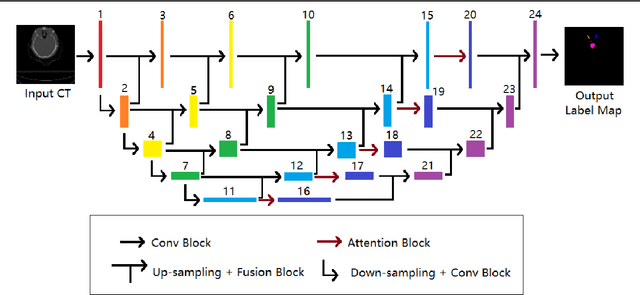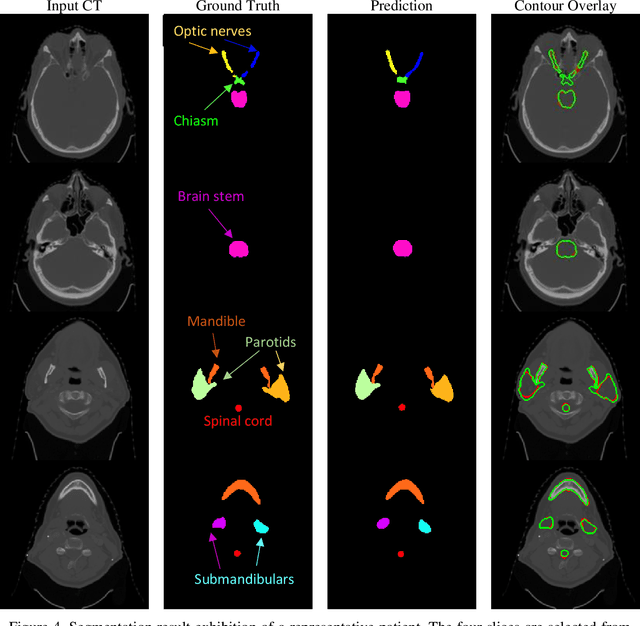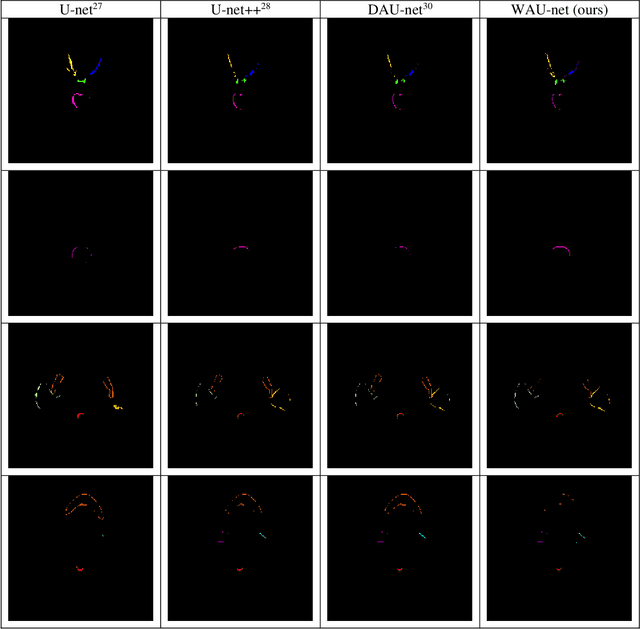Weaving Attention U-net: A Novel Hybrid CNN and Attention-based Method for Organs-at-risk Segmentation in Head and Neck CT Images
Paper and Code
Jul 10, 2021



In radiotherapy planning, manual contouring is labor-intensive and time-consuming. Accurate and robust automated segmentation models improve the efficiency and treatment outcome. We aim to develop a novel hybrid deep learning approach, combining convolutional neural networks (CNNs) and the self-attention mechanism, for rapid and accurate multi-organ segmentation on head and neck computed tomography (CT) images. Head and neck CT images with manual contours of 115 patients were retrospectively collected and used. We set the training/validation/testing ratio to 81/9/25 and used the 10-fold cross-validation strategy to select the best model parameters. The proposed hybrid model segmented ten organs-at-risk (OARs) altogether for each case. The performance of the model was evaluated by three metrics, i.e., the Dice Similarity Coefficient (DSC), Hausdorff distance 95% (HD95), and mean surface distance (MSD). We also tested the performance of the model on the Head and Neck 2015 challenge dataset and compared it against several state-of-the-art automated segmentation algorithms. The proposed method generated contours that closely resemble the ground truth for ten OARs. Our results of the new Weaving Attention U-net demonstrate superior or similar performance on the segmentation of head and neck CT images.
 Add to Chrome
Add to Chrome Add to Firefox
Add to Firefox Add to Edge
Add to Edge